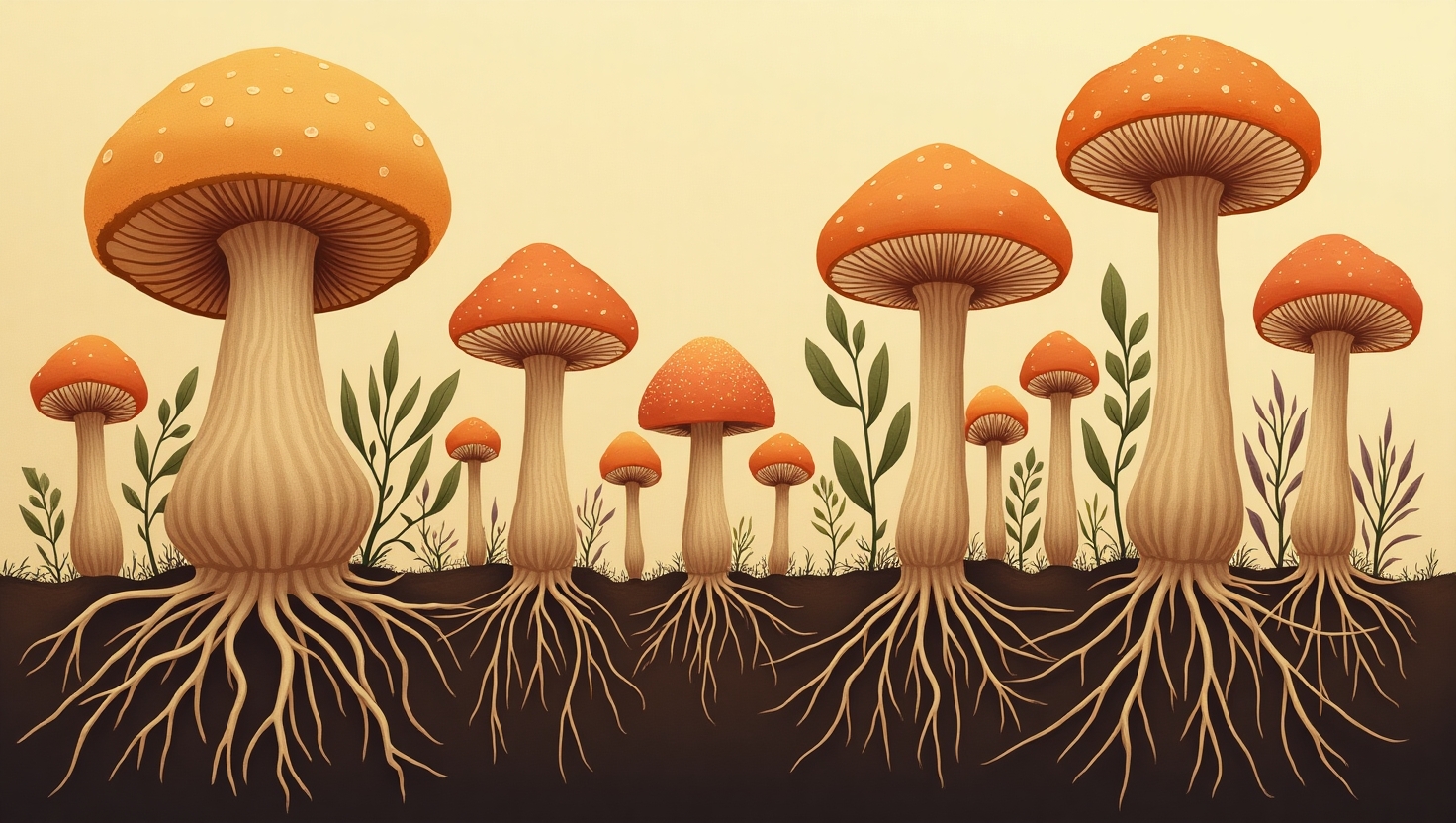The Quiet Power of Mycorrhizal Fungi in Soil Fertility
Beneath our feet, hidden in the soil, lies a silent partnership that has sustained plant life for millions of years. Mycorrhizal fungi, often overlooked, play a crucial role in maintaining soil fertility and supporting healthy ecosystems. These microscopic organisms form symbiotic relationships with plant roots, creating a vast underground network that benefits both the fungi and their plant hosts.

A Natural Collaboration
Mycorrhizal fungi attach themselves to plant roots, extending far beyond what the roots can reach on their own. In exchange for sugars produced by the plant through photosynthesis, the fungi supply essential nutrients like phosphorus, nitrogen, and water. This mutual exchange enhances the plant’s ability to thrive while improving soil structure and fertility.
There are two main types of mycorrhizal fungi:
- Arbuscular Mycorrhizae (AM): These penetrate the root cells of most crops, grasses, and many trees, forming intricate structures called arbuscules that facilitate nutrient exchange.
- Ectomycorrhizae (EM): These wrap around the roots of certain trees, like pines and oaks, without entering the cells, creating a protective sheath that aids in nutrient absorption.
Enhancing Soil Health
Beyond nutrient exchange, mycorrhizal fungi contribute to soil fertility in subtle yet profound ways:
- Improved Soil Structure: The fungal hyphae produce a sticky substance called glomalin, which binds soil particles together, reducing erosion and increasing water retention.
- Nutrient Cycling: By breaking down organic matter, these fungi release locked-up nutrients, making them available to plants.
- Disease Resistance: Some mycorrhizae form a protective barrier around roots, helping plants resist harmful pathogens.
The Impact of Modern Agriculture
Conventional farming practices—such as excessive tilling, chemical fertilizers, and pesticides—can disrupt mycorrhizal networks. Over time, this weakens the soil’s natural fertility, making crops more dependent on synthetic inputs. However, regenerative practices like reduced tillage, cover cropping, and organic amendments encourage mycorrhizal growth, restoring balance to the soil ecosystem.
Nurturing the Underground Alliance
For gardeners and farmers looking to support mycorrhizal fungi, a few simple steps can make a difference:
- Minimize Soil Disturbance: Reduce tilling to protect fungal networks.
- Use Organic Matter: Compost and mulch provide food for both plants and fungi.
- Avoid Overuse of Chemicals: Synthetic fertilizers and fungicides can harm beneficial fungi.
- Inoculate When Needed: In degraded soils, mycorrhizal inoculants can help reintroduce these vital fungi.
A Silent Guardian of Fertility
Mycorrhizal fungi remind us that some of nature’s most powerful forces are quiet and unseen. By fostering these underground partnerships, we not only improve soil fertility but also cultivate a more resilient and sustainable way of growing. In a world where soil degradation is a growing concern, embracing the wisdom of these ancient alliances may be one of the simplest and most effective ways to heal the land.
Next time you walk through a garden or a forest, take a moment to appreciate the hidden world beneath—where roots and fungi work together in quiet harmony.

